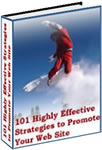|
How to Make
Effective Use of Web Fonts
© Herman Drost
Writing for your web site is not the same as offline
writing. The fonts used for print media are different than
web fonts. This is because it's harder to read text
on a computer screen and visitors tend to scan your web
pages rather than read them word for word. When deciding
on what web font to use, take into consideration the
character of your site and whether the web font type
is widely available (accomodates different screens and
operating systems).
If you use the wrong web font, your web pages will
may appear unprofessional and you may lose visitors to
your competition.
So how do you decide on what web site font to use?
1. Analyze the character of your web site - for
most web sites you would use a large or fancy font for
your header to capture your visitors attention and a
smaller web font for body text. When using a fancy font
make sure it is available on most computers otherwise your
visitors won't be able to read it. (To get around this,
read my article "Improve your web
site design with a fancy font").
2. Search engine compatibility - fonts used within
images can be seen on all computers, however it can't be
read by the search engines. They can only "read" text.
When designing images always use the "alt" tag to convey
what your image is about. Try to include appropriate
keywords in your web site copy. This will help the search
engines index your site.
3. Use a web safe font - there are 2 types of fonts
that are widely used:
Serif Fonts - these are most widely used for PRINT
media ie Times Roman, Georgia, but are not good for the
Web, because they are difficult to read on the screen.
Serif fonts are those that have fine cross-lines at the
extremities of the letter.
Sans Serif Fonts - these are fonts that don't have
serifs. They are the best fonts to use for the WEB (ie
Verdana, Arial, Helvetica, Trebuchet) but are not
appropriate for print media.
Here's a great readability study that was done when
comparing serif and sans serif fonts:
http://www.wilsonweb.com/wmt6/html-email-fonts.htm
4. Use the correct font size - alternative font
sizes add flavor and character to your web site. If you
want your text to be viewed correctly for both PC and MAC
users, then it's better to use pixels rather then points.
Points may look all right on a PC but will appear smaller
on a MAC (although these days there are only a small
percentage of folks that use MACs).
Use a large font size (ie Arial H1) for your main header
text, smaller font sizes (Arial H2, H3) for your
subheadings and a point or pixel size of 10 or 12 for your
body text.
Generally I use Verdana 10pt for body text and Arial text
for headings.
5. Utilize Cascading Style Sheets (CSS) - these
enable you to easily create a consistent font style across
your entire web site. If you want to change the font on
all your web pages, you just need to change one style
sheet.
CSS allows you to easily use comma-separated list of fonts
(ie Verdana, Arial, Helvetica, sans-serif). The browser
will use the first one it comes to in the list that is
installed. If none of the type faces in the list are
available, it reverts to the default.
Writing correct web copy using fonts that are easy to read
and readily available, not only adds character to your web
pages, but shows you care about the experience of your
visitors.
Resources
Web font readability study.
http://www.wilsonweb.com/wmt6/html-email-fonts.htm
Hundreds of fonts, most of them free.
http://www.fontguy.com
|
Subscribe
FREE to
Marketing
Tips Newsletter
NEW
Ebook
101 Highly Effective
Strategies to Promote Your Web Site

Hosting
from $30/year
|